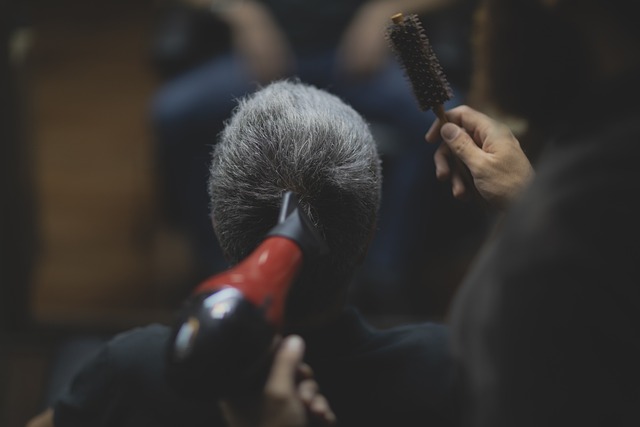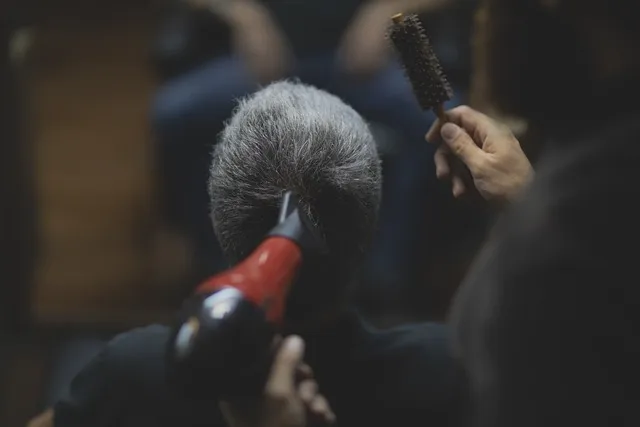How Can You Prevent Dryer Fires Through Proper Maintenance?
First things first, always clean your lint trap. After every load, take a moment to remove the lint from the screen. It might seem like a small chore, but a clogged lint trap is one of the leading causes of dryer fires. Think of it as cleaning the filter in your coffee maker; if it’s blocked, the machine can’t function properly.
Next up, inspect and clean your dryer vent. The vent is like the exhaust pipe on a car—it needs to be clear for the dryer to function safely. Over time, lint and debris can build up in the vent, restricting airflow and creating a fire hazard. Make it a habit to check the vent regularly and clean it out. You might even consider a professional cleaning once a year to ensure it’s in tip-top shape.
Also, pay attention to the dryer’s exterior. If you notice any frayed or damaged cords, replace them immediately. A faulty cord can spark a fire, so think of it as you would a loose wire on a lamp—fix it before it causes a problem.

Finally, don’t overload your dryer. It might be tempting to cram in as much laundry as possible, but this can strain the machine and increase the risk of overheating. Treat your dryer to smaller loads and give it a breather between heavy use.
Preventing Dryer Fires: Essential Maintenance Tips for Every Homeowner
Start by cleaning your lint trap before every load. It might seem like a small task, but it’s crucial. Lint buildup can block airflow, leading to overheating and potentially a fire. Also, don’t forget to clean the vent and ductwork at least once a year. You wouldn’t drive a car with a clogged fuel line, so why let your dryer operate with a blocked vent?
Next, check the vent hose for any kinks or damage. A bent hose restricts airflow, causing the dryer to work harder and increasing the risk of overheating. If your vent hose is too long or twisted, consider replacing it with a shorter, more direct route. Think of it like giving your dryer a smooth, unobstructed path to release its exhaust.
Also, ensure that your dryer is properly installed. An improperly installed dryer can lead to inefficient operation and safety hazards. If you’re unsure, it’s worth having a professional check it out. Imagine your dryer as a finely tuned machine—every part needs to be in place for it to function correctly.

Lastly, don’t overload your dryer. Overloading can strain the motor and increase the risk of overheating. Treat your dryer like a hardworking assistant—it can handle the load, but it needs a reasonable amount of work to stay in top shape. By keeping up with these maintenance tips, you’ll help prevent dryer fires and ensure your appliance runs safely and efficiently.
Keep Your Dryer Safe: Simple Steps to Prevent Dangerous Fires
First off, regular maintenance is key. Check the lint trap before every load—this small step helps prevent a lint buildup that can ignite. You wouldn’t leave your stove unattended, so don’t leave the dryer running when you’re out of the house or asleep. Simple, right?
Next, inspect the venting system. The ductwork should be straight and unobstructed. Think of it like a straw: if it’s bent or clogged, airflow is restricted, increasing fire risk. Clean out the venting every year to keep things flowing smoothly.
Also, make sure to use the right type of duct. Rigid or semi-rigid metal ducts are your best bet. Flexible plastic ducts are like playing with fire—literally. They can trap lint and heat, creating a hazardous situation.
You should also consider having a professional inspection. They can spot potential issues that might escape your notice. It’s like having a mechanic check your car before a long trip—you don’t want to gamble with safety.
Lastly, don’t overload your dryer. It might seem like a time-saver, but it actually strains the appliance and hampers its efficiency. Think of it like trying to stuff too many groceries into a single bag—it just doesn’t work well.
By following these straightforward steps, you’re taking proactive measures to ensure your dryer remains a safe and efficient appliance.
Is Your Dryer a Fire Hazard? Top Maintenance Practices to Ensure Safety
First things first, let’s chat about lint. That fluffy stuff you pull out of your lint trap is more than just a nuisance; it’s a potential fire starter. Lint accumulates quickly and can block air flow, making your dryer work harder and get hotter. To avoid a hot mess, make sure you clean the lint trap after every load. Yes, every single time! And don’t forget the vent hose. Over time, lint can build up there too. A good rule of thumb? Check and clean the vent hose at least once a year, or more often if you notice drying taking longer than usual.
Next, consider your dryer’s location. Is it in a cluttered space with piles of clothes and boxes? A dryer needs room to breathe. Ensure there’s enough space around it for air to circulate. Imagine it as a chef needing room to cook up a storm—too cramped, and it’s bound to overheat.
Now, let’s talk about that ductwork. If it’s bent or crimped, it could restrict airflow, making your dryer overheat. Make sure the duct is straight and in good condition. If you find any issues, it’s worth replacing it with a new, flexible duct that allows for smooth airflow.
Finally, have your dryer professionally inspected. It’s like getting a check-up for your car; it might seem unnecessary, but it can prevent big problems down the road. An expert can spot issues you might miss and ensure everything is running safely.
The Ultimate Guide to Dryer Maintenance: Avoiding Costly and Dangerous Fires
First things first: lint is public enemy number one. It’s like the popcorn kernel stuck in your teeth of the dryer world. Over time, lint accumulates and clogs the lint trap, vent hose, and even the dryer’s internal parts. When this happens, the dryer can overheat, and voila, you’ve got a fire risk on your hands. Cleaning out the lint trap after every load is like brushing your teeth daily—it’s non-negotiable.
But don’t stop there. It’s crucial to clean the vent hose and ductwork regularly. Think of these as the arteries of your dryer. Just as clogged arteries can lead to a heart attack, clogged vents can lead to a dryer fire. Every year, make it a habit to detach the hose and give it a thorough clean. If you’re feeling a bit adventurous, or if your dryer is older, consider calling in a professional to inspect and clean your vent system.
Now, let’s talk about installation. A dryer is like a delicate flower—it needs proper placement to thrive. Ensure that the vent hose isn’t kinked or crushed, as this restricts airflow and increases the risk of overheating. Also, make sure your dryer is level to avoid undue stress on its components.
Finally, don’t forget about your dryer’s age. Just like cars, dryers have a lifespan. If yours is pushing the decade mark or older, it might be time for a replacement. Old dryers are more prone to breakdowns and safety issues, making it worth the investment to upgrade.
How Regular Dryer Cleaning Can Save Your Home from Devastating Fires
Imagine your dryer as a powerful little machine, diligently working to keep your clothes fresh and cozy. But like any hard-working appliance, it can accumulate lint and debris over time. This buildup isn’t just an inconvenience; it’s a fire hazard. Yes, you read that right. Lint is highly flammable, and when it lines the interior of your dryer or the vent, it can create a ticking time bomb in your laundry room.
Think about it: every time you run a load, that lint gets hotter and hotter. If it builds up enough, it can ignite, turning your routine laundry day into a potential disaster. But here’s where regular cleaning comes to the rescue. By making it a habit to clear out lint from the trap and vents, you significantly reduce the risk of a fire. It’s like keeping your car’s engine clean to avoid breakdowns—simple maintenance prevents big problems.
Regular dryer cleaning also keeps your appliance running more efficiently. When vents are clogged, your dryer has to work harder, which can lead to increased energy bills and a shorter lifespan for your machine. So, not only are you protecting your home, but you’re also saving money in the long run.
Incorporating this simple task into your routine can save you from a lot of headaches. It’s easy to overlook, but just a few minutes of cleaning can prevent serious hazards and keep your home safe and sound.
From Lint Traps to Vent Hoses: Key Maintenance Tips to Prevent Dryer Fires
Let’s start with the lint trap. It’s the first line of defense against fire hazards. A clogged lint trap not only reduces efficiency but can also cause dangerous overheating. Think of it as a filter catching all the tiny, flammable particles. Cleaning it after every load is like giving your dryer a regular check-up.
Next up, the vent hose. This is where things can get tricky. Over time, the vent hose can accumulate lint or become kinked, restricting airflow. Imagine trying to blow air through a straw that’s been twisted – it’s not easy, right? The same goes for your dryer vent. Regularly check and clean the vent hose to ensure it’s clear and in good shape.
Also, keep an eye on the venting system. If you’ve ever seen a dryer vent that’s discolored or shows signs of wear, it might be time for a replacement. Just like you wouldn’t drive with a cracked windshield, you shouldn’t operate your dryer with a compromised vent.
So, when’s the last time you gave your dryer some attention? Taking these simple steps can help you avoid potential disasters and keep your home safe. After all, maintaining your dryer is just as important as any other home upkeep task.

